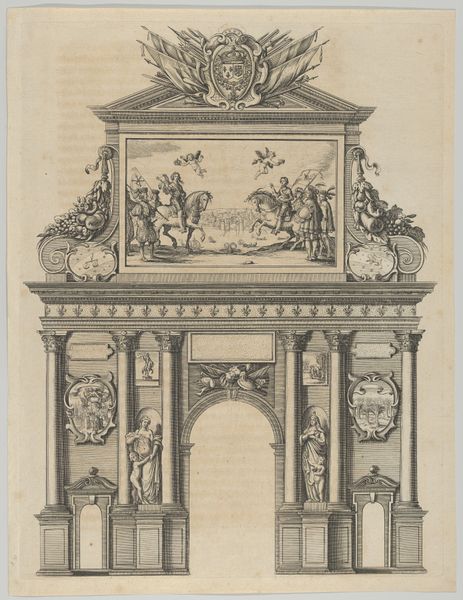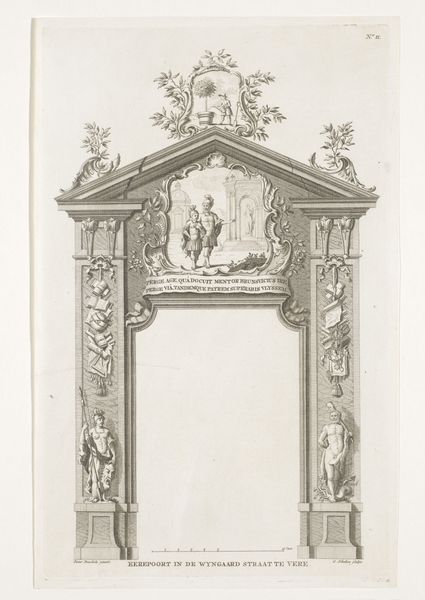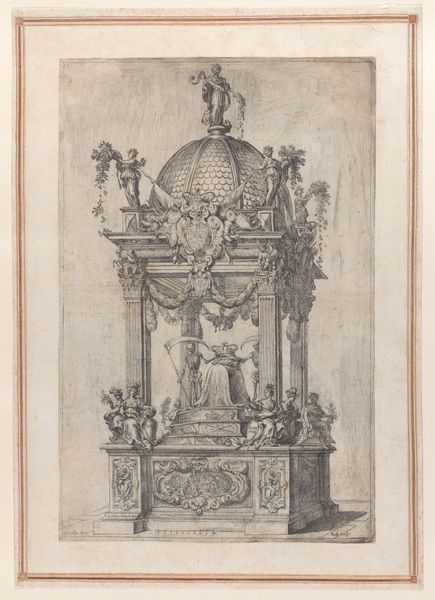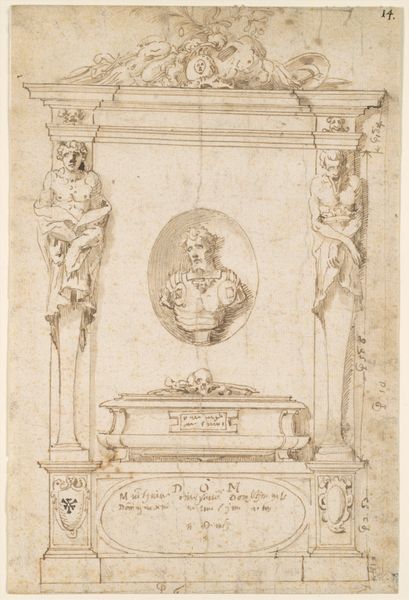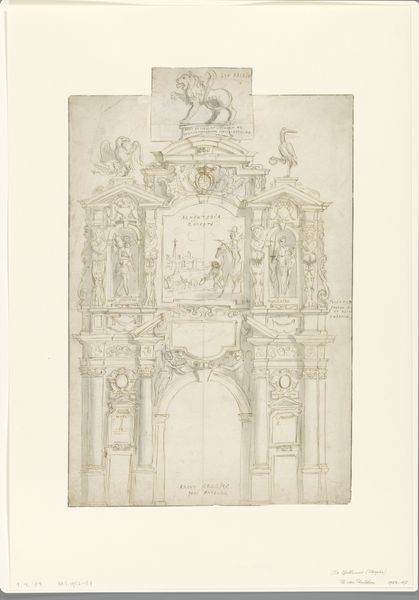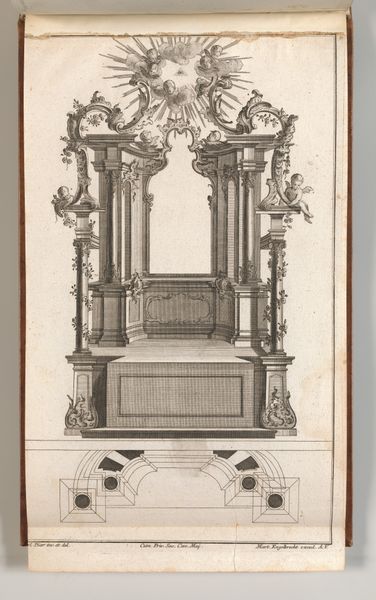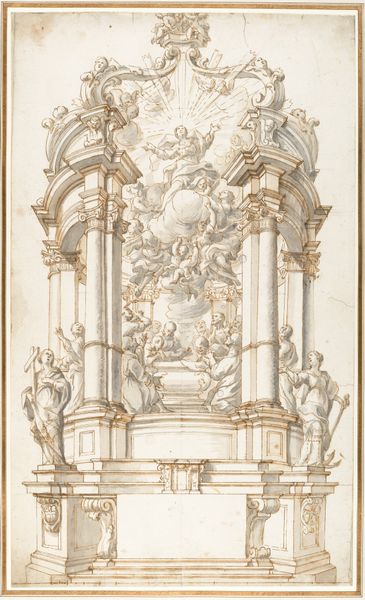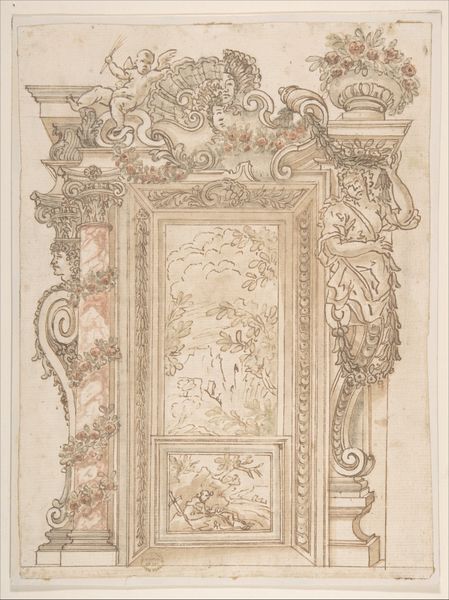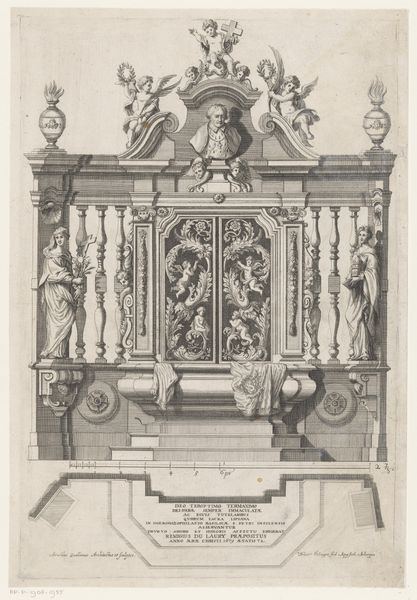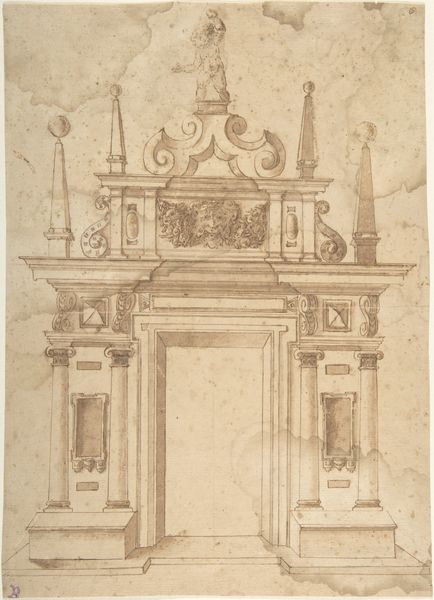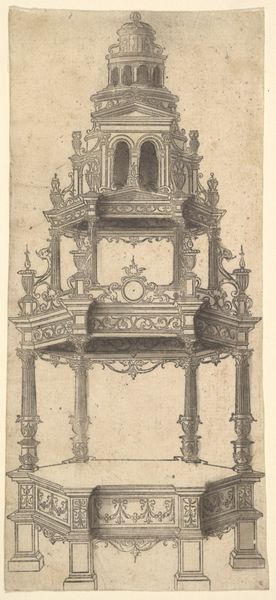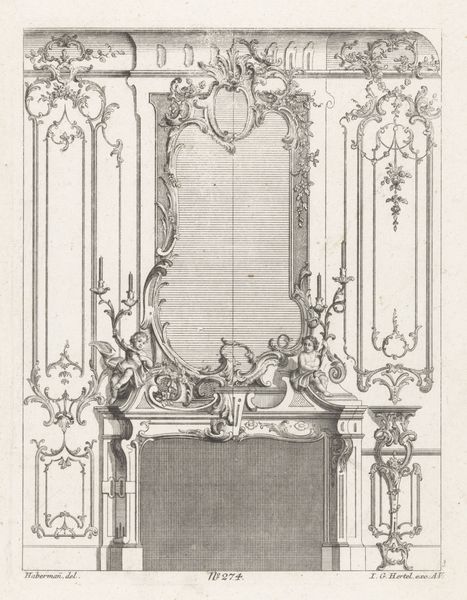
Elevation for a Wall Decoration Scheme for a Church Interior with Scenes dedicated to the Legend of the Holy Cross 1710 - 1730
0:00
0:00
drawing, print, paper, ink, architecture
#
drawing
#
baroque
# print
#
etching
#
paper
#
ink
#
history-painting
#
architecture
Dimensions: Length: 20 13/16 in. (52.8 cm) Width: 14 3/4 in. (37.5 cm)
Copyright: Public Domain
Curator: So, we're looking at "Elevation for a Wall Decoration Scheme for a Church Interior with Scenes dedicated to the Legend of the Holy Cross," dating roughly from 1710 to 1730. The work is attributed to an anonymous artist and is currently held at the Metropolitan Museum of Art. It combines ink, etching, and drawing on paper. What strikes you initially about this image? Editor: Oh, the theatricality! It feels like peering into a stage set. The elaborate ornamentation reminds me of cake frosting gone wild. It’s dramatic, certainly meant to inspire awe. Almost overpowering, isn't it? Curator: Absolutely, this piece really encapsulates the Baroque style with its intense detail and the clear intention of evoking strong emotions. When you look at the cross at the top, can you consider the symbolic meaning? In this context, how the story of the cross shapes cultural and individual identity? Editor: That's a lot to unpack, right? But it also points to a specific historical narrative woven into the very walls of the church itself. It’s meant to embed the Legend into collective memory. But, those angels do look like they are working overtime. All the ornate detailing somehow makes the central scene…distant, almost unreal. Curator: Precisely! The Legend becomes monumental through this architectural rendering and the decoration works to instill awe and solidify religious history. The architectural context isn't merely supportive; it amplifies the thematic message, which is consistent with Baroque intentions. What do you take from the monochrome? Editor: It’s like a memory fading or a half-remembered dream. Perhaps it’s an interesting choice because the stories associated with the cross are, let's face it, stories retold through generations; history refracted through belief and artistic interpretation. Curator: Very astute. This work stands as a testament to the power of art and architecture to shape beliefs, memories, and cultural identity within sacred spaces. The layers of symbolism and emotion are palpable, even now. Editor: Well, now I can't help but feel humbled by the work gone into designing something of this size. Despite being a work of architecture, you feel like you could still wander right in and be amazed at all the designs. Curator: Agreed; thinking about cultural impact gives you insight into these things. It’s been illuminating to revisit it with you!
Comments
No comments
Be the first to comment and join the conversation on the ultimate creative platform.
